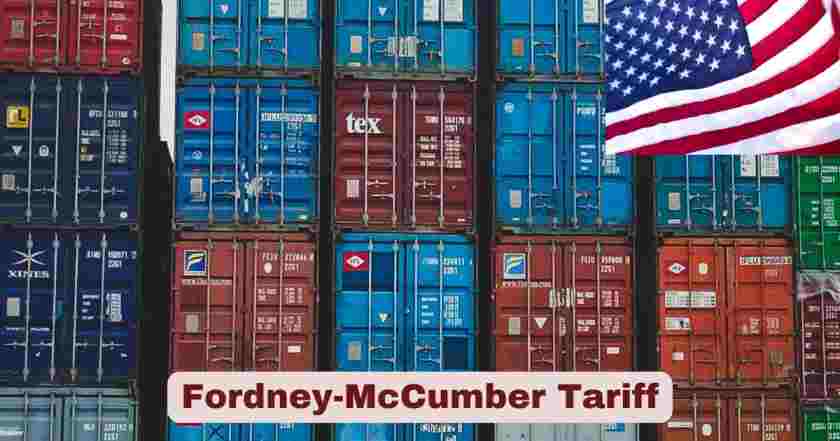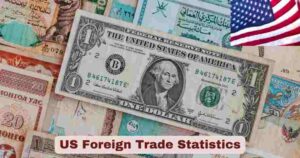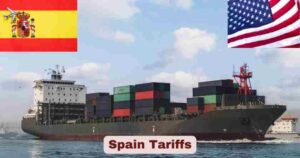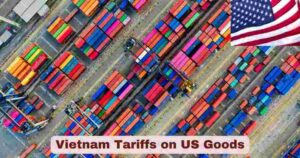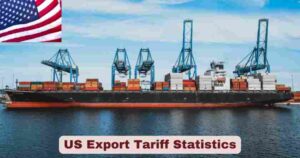The Fordney-McCumber Tariff stands as one of the most significant pieces of trade legislation in American history, fundamentally reshaping the nation’s economic landscape during the post-World War I era. This comprehensive analysis explores every aspect of this landmark tariff act, from its origins to its lasting impact on American commerce and international trade relations.
1. What is Fordney-McCumber Tariff
| Basic Information | Details |
|---|---|
| Definition | Federal law raising import duties on foreign goods |
| Purpose | Protect American industries and agriculture |
| Enactment Date | September 21, 1922 |
| Legal Classification | United States federal tariff legislation |
The Fordney-McCumber Tariff was a United States federal law enacted on September 21, 1922, that significantly raised import duties on foreign goods to protect American industries and agriculture. Named after its sponsors, Representative Joseph Fordney of Michigan and Senator Porter McCumber of North Dakota, this tariff act marked a dramatic shift toward protectionist trade policies in the aftermath of World War I.
The legislation established some of the highest tariff rates in American history, with average duties reaching approximately 40% on dutiable imports. The act covered over 3,000 different products, ranging from agricultural commodities to manufactured goods, effectively creating a protective barrier around American markets.
The Fordney-McCumber Tariff represented a complete reversal from the progressive trade liberalization policies of the Wilson administration. It restored the principle of protection that had dominated American trade policy throughout much of the 19th century, establishing a framework that would influence trade relations well into the Great Depression era.
2. Fordney-McCumber Tariff Stats & Facts
| Category | Details |
|---|---|
| Enactment Date | September 21, 1922 |
| Law Type | United States federal tariff legislation |
| Primary Objective | Protect U.S. industries and agriculture |
| Average Tariff Rate | ~40% on dutiable imports |
| Total Items Affected | Over 3,000 goods and commodities |
| Highest Duty Rate | Up to 4,000% on specific dyes and chemicals |
| Duty-Free Items | 294 items including art, books, and instruments |
| Congressional Debate Time | 14 months of discussion |
| Legislative Document Size | 2,087 pages |
| Presidential Signature | Warren G. Harding, 4:17 PM, September 21, 1922 |
| Cost of Hearings | Estimated $2.3 million in today’s dollars |
The Fordney-McCumber Tariff, enacted in 1922, was a bold legislative move designed to shield American industries and agriculture from growing foreign competition in the wake of World War I. This expansive law covered over 3,000 goods and commodities, imposing a steep average duty rate of around 40%, with extreme cases reaching up to 4,000% on certain dyes and chemicals. While most items were subject to new or increased tariffs, a few—294 items such as art, books, and scientific instruments—were granted duty-free status. The law’s sheer scale was reflected in its 2,087-page length and the 14-month congressional debate that preceded its passage.
President Warren G. Harding signed the bill into law at exactly 4:17 PM on September 21, 1922, marking a turning point in U.S. trade policy. Beyond its economic intent, the law symbolized a return to 19th-century-style protectionism, reversing earlier efforts toward trade liberalization. The congressional hearings and policy formation cost an estimated $2.3 million in today’s dollars, emphasizing the national importance placed on this legislation. The Fordney-McCumber Tariff would go on to influence international relations and future economic strategies, laying groundwork for debates on trade policy that would persist throughout the 20th century.
3. Historical Background of Fordney-McCumber Tariff
| Historical Context | Information |
|---|---|
| Pre-War Policy | Lower tariff rates under Wilson administration |
| War Impact | European industrial capacity severely damaged |
| Post-War Challenge | American farmers and manufacturers faced renewed foreign competition |
| Political Shift | Republican victory in 1920 elections |
The historical context surrounding the Fordney-McCumber Tariff is essential for understanding why this protectionist legislation emerged in 1922. The end of World War I created unprecedented economic challenges that demanded new policy responses from the American government.
During World War I, American agriculture and manufacturing expanded dramatically to meet wartime demands and fill the void left by devastated European producers. American farmers increased production by 15% between 1914 and 1919, while manufacturing output grew by nearly 25% during the same period.
The Republican Party’s return to power in the 1920 elections under Warren G. Harding brought a fundamental shift in trade policy philosophy. The new administration explicitly rejected the internationalist approach of the Wilson years, embracing instead a nationalist economic agenda centered on protecting American jobs and industries.
The immediate catalyst for the Fordney-McCumber Tariff was the agricultural depression that began in 1920. Farm prices collapsed by more than 50% between 1919 and 1921, creating intense political pressure for protective measures that would shield American producers from foreign competition.
4. Causes of Fordney-McCumber Tariff
| Primary Causes | Description |
|---|---|
| Agricultural Depression | Farm prices fell 50% between 1919-1921 |
| Industrial Competition | European recovery threatened American manufacturers |
| Political Pressure | Strong lobbying from affected industries |
| Economic Philosophy | Republican commitment to protectionism |
Multiple interconnected factors led to the passage of the Fordney-McCumber Tariff, with economic distress and political ideology playing equally important roles. The convergence of these forces created an irresistible momentum toward higher trade barriers.
The most immediate cause was the severe agricultural depression that struck American farmers beginning in 1920. Wheat prices fell from $2.50 per bushel in 1919 to $1.00 per bushel in 1921, while corn prices dropped from $1.50 to $0.50 per bushel during the same period.
Industrial manufacturers also faced increasing competitive pressure as European factories resumed full production after wartime reconstruction. American steel, chemical, and textile producers complained that foreign competitors were “dumping” products in American markets at below-cost prices.
The ideological commitment of the Republican Party to protectionist principles provided the political framework for higher tariffs. Party leaders argued that protection was essential for maintaining high American wages and living standards against “cheap foreign labor.”
Powerful interest groups mobilized extensive lobbying campaigns to support higher duties on their products. The American Farm Bureau Federation, the National Association of Manufacturers, and numerous industry-specific organizations coordinated their efforts to influence congressional deliberations.
5. Provisions of Fordney-McCumber Tariff
| Major Provisions | Details |
|---|---|
| Tariff Schedules | 14 comprehensive product categories |
| Duty Calculation | Ad valorem and specific duties |
| American Selling Price | Applied to chemicals and other products |
| Tariff Commission Powers | Expanded investigative authority |
The Fordney-McCumber Tariff contained extensive and complex provisions that touched virtually every aspect of international trade. These provisions reflected both the breadth of American economic interests and the sophisticated understanding of trade policy that had developed by the 1920s.
The act organized tariff duties into fourteen comprehensive schedules covering everything from agricultural products to manufactured goods. Schedule A covered chemicals, drugs, and dyes; Schedule B addressed earthenware and glassware; while Schedule N protected agricultural products and provisions.
The legislation employed both ad valorem duties (percentage of value) and specific duties (fixed amount per unit) depending on the product category. This dual approach allowed policymakers to tailor protection to the specific characteristics of different industries and markets.
The American Selling Price provision represented one of the most innovative aspects of the Fordney-McCumber Tariff. Under this system, duties on certain products were calculated based on the domestic selling price of comparable American goods rather than the foreign value, effectively doubling or tripling the protective effect.
The act significantly expanded the powers of the United States Tariff Commission, authorizing it to investigate costs of production at home and abroad. The Commission could recommend duty adjustments of up to 50% based on differences in production costs, though the President retained final authority over such changes.
6. Economic Impact of Fordney-McCumber Tariff
| Economic Effects | Measurement |
|---|---|
| Trade Volume | Imports declined 25% (1922-1925) |
| Government Revenue | $562 million in 1923 |
| Price Effects | Domestic prices increased 5-15% |
| Industrial Protection | Manufacturing employment stabilized |
The economic impact of the Fordney-McCumber Tariff was profound and multifaceted, affecting everything from consumer prices to international trade flows. Analysis of these effects reveals both the intended benefits and unintended consequences of protectionist policy.
Import volumes declined significantly following implementation of the tariff, with total merchandise imports falling by approximately 25% between 1922 and 1925. This reduction was particularly pronounced in manufactured goods, where higher duties made foreign products less competitive in American markets.
The tariff generated substantial revenue for the federal government, contributing $562 million in 1923 alone. This represented approximately 30% of total federal revenue, making the Fordney-McCumber Tariff a crucial component of government finance during the 1920s.
Domestic prices increased across many product categories as foreign competition diminished. Consumer goods prices rose by an estimated 5-15% on average, with the largest increases occurring in heavily protected sectors such as textiles and steel products.
Agricultural sectors experienced mixed results from the Fordney-McCumber Tariff protection. While some commodities like sugar and wool benefited from higher duties, export crops such as wheat and cotton suffered from foreign retaliation against American trade barriers.
7. Political Reactions to Fordney-McCumber Tariff
| Political Responses | Position |
|---|---|
| Republican Support | Strong endorsement from party leadership |
| Democratic Opposition | Criticized as benefiting special interests |
| Regional Divisions | West and South opposed, Northeast supportive |
| International Criticism | Trading partners condemned protectionist turn |
The Fordney-McCumber Tariff generated intense political controversy both domestically and internationally, reflecting the deep ideological divisions over trade policy that characterized the 1920s. These political reactions shaped subsequent policy debates and electoral outcomes.
Republican leaders enthusiastically supported the Fordney-McCumber Tariff as fulfillment of their campaign promises to protect American industries and workers. President Harding declared the tariff essential for maintaining American prosperity and preventing unfair foreign competition.
Democratic opposition to the tariff was fierce and sustained, with party leaders denouncing it as a giveaway to special interests at the expense of consumers. Senator Oscar Underwood of Alabama called the legislation “the most vicious tariff bill ever presented to an American Congress.”
Regional divisions emerged clearly during congressional debates, with representatives from agricultural export regions generally opposing higher duties. Western and Southern legislators argued that protection would harm their constituents by reducing agricultural exports and increasing input costs.
International reaction to the Fordney-McCumber Tariff was overwhelmingly negative, with major trading partners condemning the American turn toward protectionism. European governments threatened retaliatory measures and accused the United States of abandoning its wartime commitments to liberal trade policies.
8. International Consequences of Fordney-McCumber Tariff
| Global Effects | Impact |
|---|---|
| Trade Wars | Retaliatory tariffs from 25+ countries |
| Export Decline | American exports fell 15% (1922-1924) |
| Diplomatic Relations | Strained relationships with key allies |
| Economic Nationalism | Encouraged protectionist policies worldwide |
The international consequences of the Fordney-McCumber Tariff extended far beyond American borders, contributing to a global shift toward economic nationalism and trade restrictions. These effects undermined international economic cooperation and set the stage for the more severe trade wars of the 1930s.
More than twenty-five countries imposed retaliatory tariffs on American goods in response to the Fordney-McCumber Tariff. Canada, Britain, France, and Germany led the retaliation efforts, targeting American agricultural and manufactured exports with discriminatory duties.
American exports declined significantly as foreign markets became less accessible due to retaliatory measures. Total merchandise exports fell by approximately 15% between 1922 and 1924, with agricultural exports experiencing particularly severe declines.
Diplomatic relations between the United States and its major trading partners deteriorated as the tariff was seen as a betrayal of wartime cooperation. European allies argued that American protectionism violated the spirit of international collaboration that had emerged during World War I.
The Fordney-McCumber Tariff encouraged the spread of protectionist policies worldwide, as other nations adopted similar measures to protect their domestic industries. This trend toward economic nationalism contributed to the fragmentation of the global economy and reduced opportunities for international trade.
9. Agricultural Effects of Fordney-McCumber Tariff
| Agricultural Impacts | Results |
|---|---|
| Protected Commodities | Sugar, wool, dairy products benefited |
| Export Crops | Wheat, cotton, corn faced retaliation |
| Farm Income | Mixed results across regions and products |
| Production Shifts | Increased domestic production of protected goods |
The agricultural effects of the Fordney-McCumber Tariff were complex and varied significantly across different commodities and regions. While some sectors benefited from protection, others suffered from foreign retaliation and reduced export opportunities.
Heavily protected agricultural commodities such as sugar, wool, and dairy products experienced significant benefits from the Fordney-McCumber Tariff. Domestic sugar producers saw their market share increase from 45% to 65% between 1922 and 1925, while wool prices stabilized after years of decline.
Export-oriented crops faced severe challenges as foreign countries retaliated against American protectionism. Wheat exports declined by 40% between 1922 and 1925, while cotton exports fell by 25% during the same period as traditional markets became less accessible.
Regional variations in agricultural impact reflected the different commodity mixes across American farming areas. Northeastern dairy farmers and Western sugar beet growers generally supported the tariff, while Southern cotton producers and Great Plains wheat farmers opposed it.
The tariff encouraged production shifts toward protected commodities, leading to overproduction in some sectors. Domestic sugar production increased by 30% between 1922 and 1927, contributing to periodic surpluses that depressed prices despite tariff protection.
10. Industrial Impact of Fordney-McCumber Tariff
| Industrial Effects | Outcomes |
|---|---|
| Manufacturing Protection | Steel, chemicals, textiles heavily protected |
| Employment Stabilization | Industrial jobs maintained at higher levels |
| Investment Incentives | Increased domestic industrial investment |
| Technology Development | Reduced pressure for innovation in protected sectors |
The industrial impact of the Fordney-McCumber Tariff was generally positive for manufacturing sectors, providing significant protection against foreign competition and encouraging domestic investment. However, this protection came at the cost of reduced competitive pressure and slower technological advancement.
Manufacturing industries received substantial protection under the Fordney-McCumber Tariff, with steel duties averaging 35%, chemical duties reaching 60%, and textile duties ranging from 40-55%. These high rates effectively eliminated foreign competition in many product categories.
Industrial employment stabilized and even increased in heavily protected sectors as domestic producers captured market share previously held by foreign competitors. Steel employment rose by 15% between 1922 and 1925, while chemical industry employment grew by 20% during the same period.
The tariff encouraged significant new investment in American manufacturing as entrepreneurs and established companies expanded capacity to serve the protected domestic market. New steel mills, chemical plants, and textile facilities were constructed throughout the decade.
However, reduced competitive pressure led to slower rates of technological innovation in some protected industries. American steel and textile companies, insulated from foreign competition, invested less in research and development compared to their unprotected European counterparts.
11. Criticism of Fordney-McCumber Tariff
| Major Criticisms | Arguments |
|---|---|
| Consumer Costs | Higher prices for everyday goods |
| Economic Inefficiency | Misallocation of resources |
| International Relations | Damaged diplomatic relationships |
| Income Distribution | Benefited wealthy at expense of poor |
The Fordney-McCumber Tariff faced extensive criticism from economists, consumer advocates, and international observers who argued that its costs outweighed any benefits. These criticisms focused on both domestic economic effects and broader international consequences.
Consumer advocates argued that the Fordney-McCumber Tariff imposed a hidden tax on American families by raising prices for everyday goods. A typical family was estimated to pay an additional $100-150 per year in higher prices due to tariff protection.
Professional economists criticized the tariff for creating economic inefficiencies by allowing less productive domestic industries to survive and prosper. They argued that resources were being misallocated away from more efficient export industries toward less efficient import-competing sectors.
International relations experts condemned the Fordney-McCumber Tariff as a betrayal of American leadership in promoting global economic cooperation. They warned that American protectionism would encourage similar policies elsewhere and undermine prospects for international peace and prosperity.
Critics also argued that the tariff worsened income inequality by benefiting wealthy industrialists and landowners at the expense of working-class consumers. The regressive nature of tariff protection was seen as contradicting American democratic values and social justice principles.
12. Long-term Legacy of Fordney-McCumber Tariff
| Legacy Elements | Long-term Impact |
|---|---|
| Policy Precedent | Influenced 1930 Smoot-Hawley Tariff |
| International Trade | Contributed to global trade restrictions |
| Economic Thought | Sparked debates about protectionism |
| Political Alignment | Reinforced regional and partisan divisions |
The long-term legacy of the Fordney-McCumber Tariff extended well beyond the 1920s, influencing American trade policy and international economic relations for decades to come. Its impact can be traced through subsequent policy decisions and intellectual debates about the proper role of government in international trade.
The Fordney-McCumber Tariff established crucial precedents for even more restrictive trade policies, most notably the Smoot-Hawley Tariff of 1930. The institutional mechanisms and political coalitions created in 1922 provided the foundation for the even more damaging protectionist measures of the Great Depression era.
Internationally, the tariff contributed to the breakdown of the liberal trading system that had emerged in the late 19th century. The cycle of retaliation and counter-retaliation that began with the Fordney-McCumber Tariff continued through the 1920s and intensified dramatically during the 1930s.
The academic and policy debates sparked by the Fordney-McCumber Tariff helped shape modern understanding of international trade theory and policy. Economists developed more sophisticated analyses of the costs and benefits of protection, laying the groundwork for post-World War II trade liberalization efforts.
Politically, the tariff reinforced regional and partisan divisions over trade policy that persisted throughout the 20th century. The coalition of interests that supported the Fordney-McCumber Tariff became a permanent feature of American politics, influencing trade policy decisions well into the modern era.
Disclaimer: The data research report we present here is based on information found from various sources. We are not liable for any financial loss, errors, or damages of any kind that may result from the use of the information herein. We acknowledge that though we try to report accurately, we cannot verify the absolute facts of everything that has been represented.

